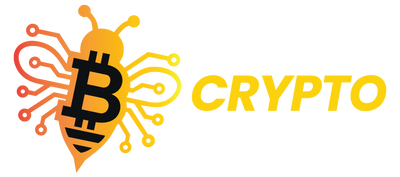A Beginner’s Guide to Non-Fungible Tokens (NFTs)
If you’ve ever wondered why people pay thousands (sometimes millions) for digital art, music clips, or even viral videos – you’ve bumped into NFTs.
Take the famous “Charlie Bit My Finger” video. Back in May 2021, the viral clip of a baby biting his brother’s finger sold as an NFT for around $760,000. The twist? The video was supposed to be removed from YouTube forever, but the new owner chose to keep it online for everyone to enjoy. The NFT itself works like a digital certificate of ownership, permanently recorded on the blockchain.
That story shows the strange, fascinating world of NFTs: you don’t buy the file itself, you buy proof that you own the original.
TL;DR |
|---|
|
So, what does "Non-fungible" mean?
Non-fungible means “unique” – unlike money. A $20 note can be swapped for another $20 note with no difference. NFTs, on the other hand, are individually distinct.
Token means it’s a digital record stored on the blockchain.
Think of an NFT as a receipt plus certificate of authenticity, rolled into one, but for digital stuff.
How do NFTs actually work?
Each NFT has its own metadata – information about the creator, ownership history, and a link to the file it represents.
When you buy an NFT, the blockchain shows you as the rightful owner.
The actual media (like a video, artwork, or song) might be stored elsewhere online, but the NFT points to it. Newer collections even store both the token and the media directly on-chain for extra security.
Why are NFTs valuable?
NFTs bring two big things to digital ownership:
- Proof of ownership – Everyone can see which wallet address owns the NFT.
- Authenticity – The blockchain makes it easy to prove what’s original and what’s just a copy.
This is why collectors, artists, and even businesses see NFTs as a way to create scarcity and value in a digital world where files are normally endless and identical.
Common uses of NFTs
- Art & collectibles: Think digital paintings or viral memes.
- Music: Musicians can sell tracks directly to fans.
- Gaming: Unique in-game items or characters.
- Real estate & documents: NFTs can represent contracts, titles, or deeds.
And of course, viral internet history – like Charlie biting his brother’s finger.
Storing and keeping NFTs safe
Buying an NFT is one thing – keeping it safe is another.
Your NFT sits in a crypto wallet (like your Bitcoin or Ethereum).
The NFT file might be stored “off-chain” (on the internet somewhere else), so many projects now use decentralised storage solutions like IPFS or Arweave to avoid file loss.
Always back up your wallet’s seed phrase – without it, you lose access to your NFTs forever.
Buying and selling NFTs
NFTs are mostly traded on NFT marketplaces like OpenSea, Magic Eden, or Blur.
You can buy one at a set price, or bid in an auction.
Prices can be unpredictable – like traditional art, they’re worth what the next person is willing to pay.
Many NFTs also pay royalties to the original creator each time they’re resold, thanks to smart contracts.
The Final Buzz
NFTs may sound strange at first, but they’re changing how we think about digital ownership. From million-dollar art sales to owning a piece of internet history like Charlie Bit My Finger, NFTs show that value doesn’t just live in the physical world.
They’re not for everyone, but love them or hate them, NFTs are here to stay.
Stay safe. Stay smart. Be Crypto Safe.
Education is your best defence. Unlock member-only guides, checklists, and tools designed to protect your crypto, stay safe and be compliant.



